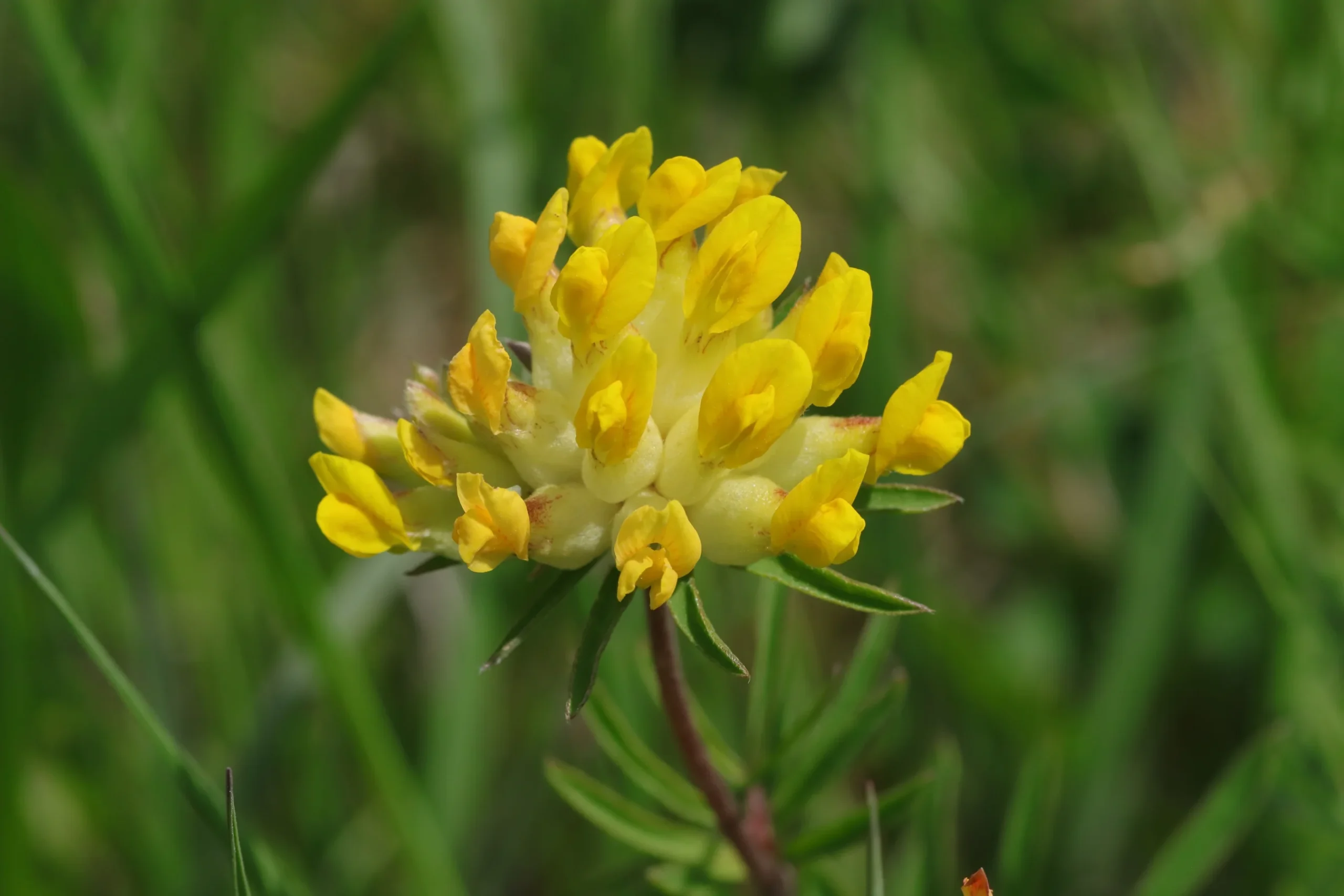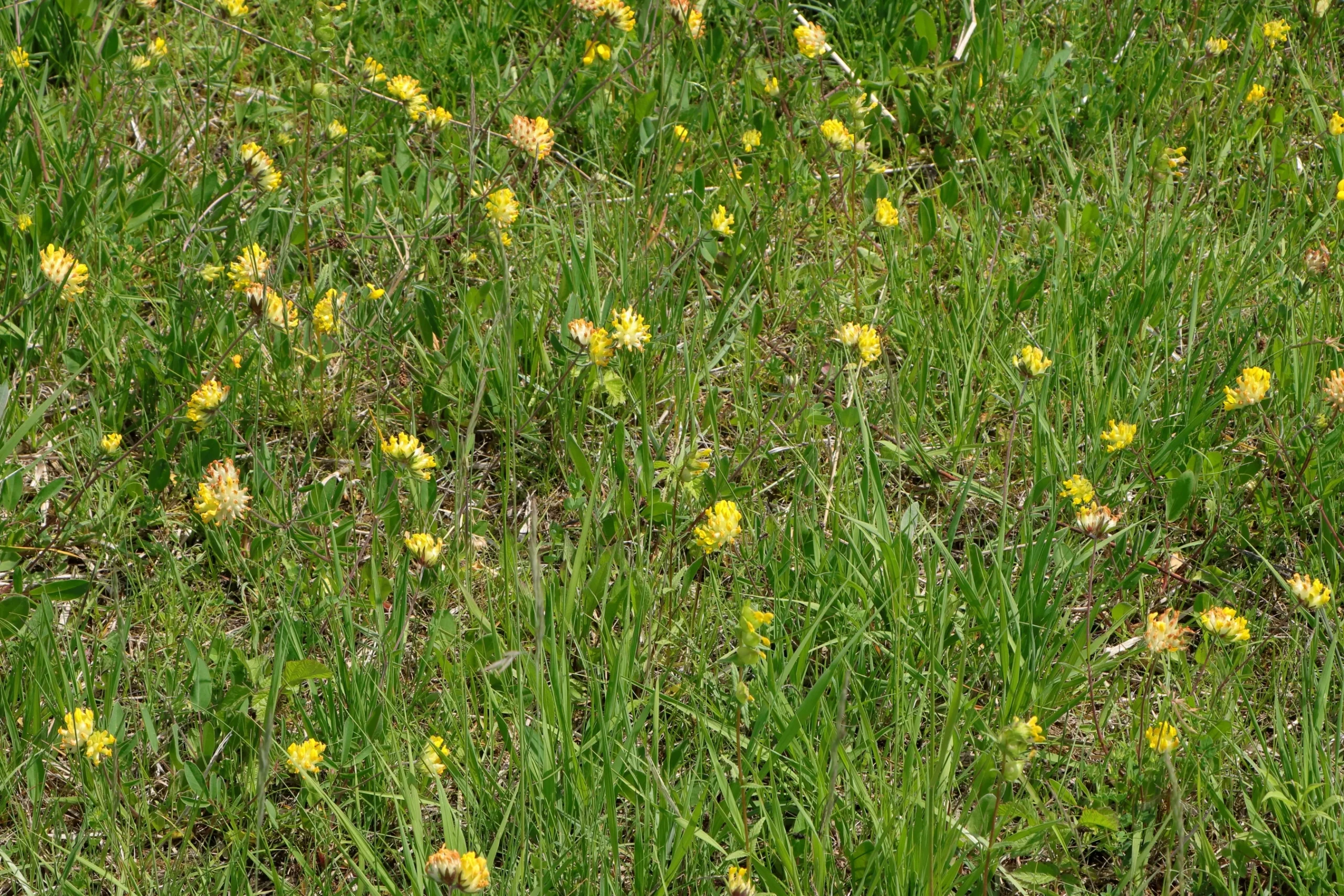4 Minuten Lesezeit
The true kidney vetch is difficult to miss on the dry grasslands due to its yellow flowers. At the same time, the plant is the only food source for an inconspicuous caterpillar.


Occurrence and distribution: Kidney vetch can be found in dry meadows, semi-arid grasslands, along roadsides and in quarries. The plant prefers calcareous soils. Originally, kidney vetch originated from southern Europe. Today, however, it is native to all of Europe, West Asia and North Africa. In America, the plant is considered a naturalised neophyte. One occurrence of the plant is in the Eriskircher Ried.
Plant description
Subspecies: The species group is rich in forms and has a large number of subspecies. In Europe there are about 24 different subspecies as well as many intermediate forms and hybrids.
Growth habit: It is a perennial, herbaceous plant that can reach a height of between 5 and 20 cm (rarely up to 40 cm). The plant forms a semi-rosette of individual leaves close to the ground. Below the ground lies the somewhat thickened, branched rhizome. A stem grows out of this. The roots enter into a symbiosis with nitrogen-binding bacteria and can thus supply the plant.
Leaves: The basal leaves consist exclusively of a clearly enlarged terminal leaf. The stem leaves are pinnate. The upper side of the leaves is dark green. The edges of the leaves are often curled upwards. The underside of the leaves is slightly covered with short white hairs. The individual leaflets are elongated-elliptical. Between one and seven leaflets form per stem leaf. The leaf can be up to 7 cm long.
Flowers: The flower buds have a reddish to orange colour. The terminal inflorescence consists of 10 to 30 individual flowers. The calyx is slightly inflated and covered with fine white hairs. Often these are also slightly overlaid with red. The yellow butterfly flowers form at the end of the calyx. The corollas are between 9 and 19 mm long. Inside the flowers are the 10 stamens, which are fused together to form a tube. The nectar is formed in this tube. These can only be pollinated by bumblebees or butterflies. The flowering period is from June to September.
Fruits: The one- to two-seeded nutlets sit inside the dry calyx. These seeds are mainly dispersed by the wind. They are small, roundish to oval seeds.
Special characteristics of the plant
Special characteristics of the plant: The kidney vetch blue butterfly depends on the leaves of kidney vetch for its caterpillar form. These serve as a food plant for the caterpillars.
Uses in folk medicine
Uses in folk medicine: In the traditional medicine, the kidney vetch is mainly used to treat coughs as well as to heal wounds. The plant’s ingredients have both astringent and antibacterial effects, as well as being blood- and cough-soothing. A tea can be made from the leaves and flowers as a gargle solution. This can be used against an irritating cough. The tea can also be used externally in the form of compresses to treat poorly healing wounds. Beware: There is insufficient scientific evidence to prove this.
Ingredients: Catechin (tannins), quercetin, kaempferol, isorhamnetin, rhamnetin, flavonols, galactosides, arabinosides.
Folk names & name origin
Folk names: Kidney vetch is known by various folk names. These include “Apothekerklee, Bartklee, Watteblume, Wollklee, Tannenklee, Katzentapen sowie Goldknopf“ (apothecary clover, bearded clover, cotton clover, woolly clover, fir clover, cat’s foot and golden button). The plant is also called Wundkraut (woundwort). Both the name “apothecary’s clover” and “woundwort” indicate its use as a medicinal plant.
Origin of name: The botanical genus name “Anthyllis” (ἀνθυλλίς) comes from the two Greek words “anthos” (ἄνθος) – meaning flower – and “ioulos” (ἴουλος) – meaning milk hair / woolly. This refers to the hairy calyxes. The botanical species name “vulneraria” can be traced back to the Latin word for “wound”. This is also reflected in the German name “Wundklee”. Here, the popular use as a “cough medicine and for healing wounds” should also be mentioned.
Endangerment of the plant
Endangerment of the plant: The true kidney vetch is classified as not endangered in Germany. Though occurrences of the plant are becoming rarer, as overfertilisation and modern agriculture are leading to a loss of the necessary dry meadows.
Distribution codes: A, AV, M1, M2, F, K